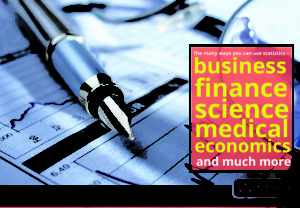
Statistics is handled efficiently in myriad ways in the field of data analysis. Statistical analysis is a module of data analytics. A representative selection from a total population is drawn and the data collected is scrutinized so that the sample data speaks for a set of items dealt with, in the framework of business intelligence. It involves a description of the nature of data that is to be analysed, drawing a parallel between the sample data selected and the underlying population, coming up with a model that recapitulates the understanding of how the sample data is in regard to the total population, substantiating the standpoint that the model is reliable, and making use of predictive analytics in order to enlist possible scenarios that make the study relevant, paving the way for further research.
Demography and statistics are yet another link that is often explored, making utmost use of statistical analysis for the population study, research, administration, etc. Records of births, deaths, marriages, immigration and emigration and census of population provide data that help in making sound decisions about national policies, writing reports of our country, doing an analytic study of the welfare of our country, enabling each and every sector to know, learn and equip ourselves better, suiting to the demographic component.
Any kind of data, nominal or ordinal, can be represented using pie charts. Qualitative or descriptive information come under nominal data whereas ordinal data is quantitative. Both these kinds of data can be displayed statistically using pie charts. Usually, about ten categories or fewer can be put together in proportion to display relative data.
Quantitative data can be put to analysis using frequency analysis which is a part of descriptive statistics. In statistics, the frequency is the number of times an event occurs. It deals with the count of occurrences and examines measures of central tendency, dispersion, percentiles, etc.
Among software that enables handling of statistical data, the ‘Statistical Package for the Social Sciences’ (SPSS) is a set of programs for operating, analyzing, and displaying data; the package being extensively used in the social and behavioral sciences. It is used to do investigative data analysis and descriptive statistics. Among the two, this software is used to create histograms, frequency distributions, stem, and leaf plots and to compute the typical measures of central tendency (mean, median, and mode), dispersion (range, semi-interquartile range, and standard deviation / variance), and of kurtosis. (boulevardsaintlaurent.com)
R is a cohesive group of software amenities for a data operation, calculation, and graphical demonstration. It includes an operative data management and storage ability, a set of operatives for controls on collections, in specific matrices, a large, intelligible, combined assortment of transitional tools for data analysis, graphical accommodations for data analysis and display, and a simple, robust and active programming language.
This way, statistics is used to collect, analyze and interpret data concerning various fields such as biostatistics, business analytics, demography, econometrics, geostatistics, quality control, statistical finance, operations research, etc.